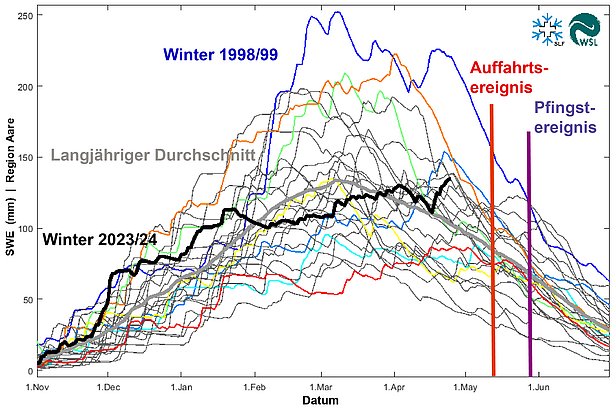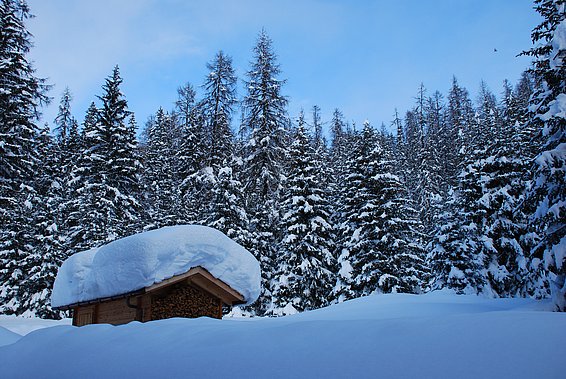08.05.2024 | Stephanie Kusma | SLF News
Since 2009, the Operational Snow-Hydrological Service (OSHD) of the WSL Institute for Snow and Avalanche Research SLF has been providing regular forecasts of, among other things, how much snow there is in Switzerland and how much snowmelt runoff can be expected. OSHD head Tobias Jonas explains.
Tobias Jonas, how much water is left over when a cubic metre of snow melts?
It depends on the type of snow. One cubic metre of light fresh snow contains about 50 to 100 litres of water, while the last remnants of melting snow contain up to 600 litres per cubic metre. Depending on the season and the condition of the snow cover, the water content can vary by a factor of about 10, which is why we at the OSHD need to know not only the height and distribution of the snow cover, but also its condition as precisely as possible for our calculations.
How does the OSHD do this?
Firstly, we monitor how much snow there is in Switzerland and where it is throughout the year. We compare these data with long-term observations so that we can say whether the amounts of snow in a given region and at a given time are average, below average or above average. We also use our models to calculate how much water is stored in the snowpack overall. We also produce short-term snowmelt runoff forecasts. This involves calculating how much snowmelt runoff can be expected over the next few days. Of course, these forecasts stand or fall with the accuracy of the weather forecast.
For whom is this data important?
For a wide range of users. For example, the snowmelt runoff forecasts are of interest to anyone involved in hydrological forecasting and flood warning. Ongoing analyses of the available snow water resources in turn provide information on how much snowmelt runoff can flow into rivers and lakes in spring and summer. This is also of interest for hydroelectric power generation, for example. Our data provide the avalanche warning service with information on the expected snow depths, while our snow maps in the MeteoSwiss app can be used by winter sports enthusiasts to find out where there is snow and where it is likely to fall. Finally, scientists from various disciplines use our data series for their research. So we have a wide range of interested parties.
Would the information from the OSHD have been useful in 1999?
The way our data is used today tells me that it probably would have been interesting in 1999. It might not have prevented the floods, because the weather conditions would still have occurred, but it might have given us more time to prepare for the event. If you have reliable model results that tell you how much snow there is and how much of it will melt in the next few days, that is certainly a good basis for making decisions about any protective measures.
Always up to date: Subscribe to the WSL Newsletter
Contact ¶
Further information ¶
Copyright ¶
WSL and SLF provide image and sound material free of charge for use in the context of press contributions in connection with this media release. The transfer of this material to image, sound and/or video databases and the sale of the material by third parties are not permitted.


